Motorcycle safety relies on mirrors for riders to keep tabs on what's going on around them. Yet, not every mirror cuts it the same way. Riders have long been bickering over which is better: bar end mirrors or the stock mirrors. They argue about which (Bar End Mirrors vs Stock Mirrors) gives a better view, […]
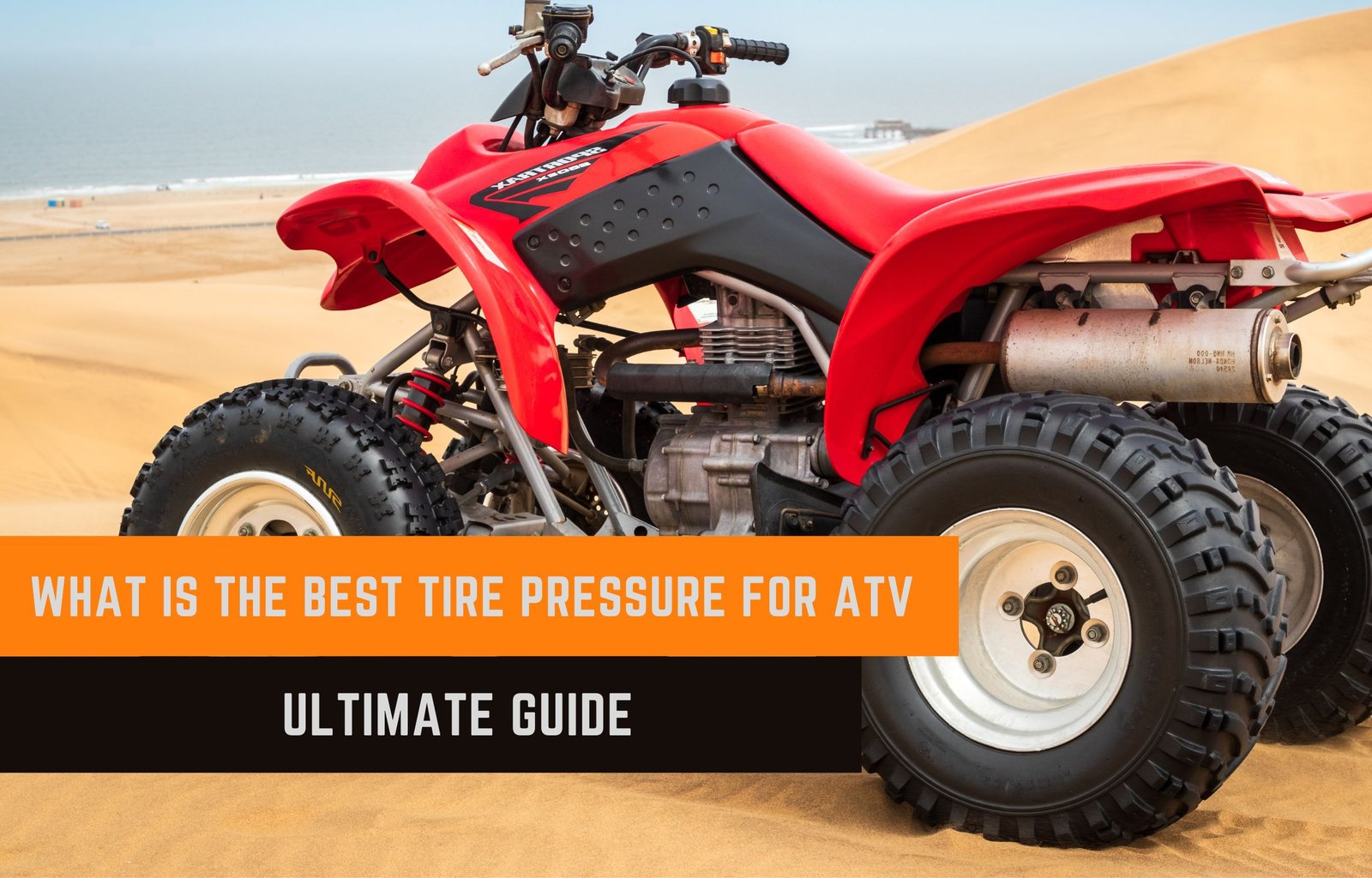
What Is The Best Tire Pressure For ATV? Ultimate Guide 2023
Maintaining the correct tire pressure for your ATV is essential for securely and also properly running your ATV.
Tire pressure is measured by determining the amount of air in the liner of the ATV tire in pounds per square inch (PSI). When your tires are blown up to the recommended tire pressure (PSI), you can delight in the maximum life as well as efficiency of the tire as well as the ATV.
Exactly how do you inspect your ATV or Quad tire pressure? At first, you need to recognize the recommended tire pressure for your tires. After that, you can utilize a low-pressure tire pressure gauge to gauge the air pressure of the tires, readjusting as required to fulfill the recommended PSI or to fulfill your demands in particular circumstances.
Read further to see exactly how to finest check and also preserve your tire pressure for each scenario.
Table of Contents
The Importance Of Correct Tire Pressure
No correct tire pressure for ATV can trigger a lot of problems. Whether it's higher, lower, or irregular tire pressure, your safety when operating the ATV as well as the durability of the tires will certainly be impaired.
Incorrect tire pressure gives you much less control over your ATV and also can put you in the danger of an accident.
The most noticeable threat the popping your tire. If your tire pressure is as well low or too high, it is a whole lot much easier to pierce the tire and also leave you with a puncture.
When the tire is flat, it is really simple to enter a negative accident, however also when your tire does not blow, incorrect tire pressure can place you at a higher risk of mishap. Improper tire pressure gives you less control over the ATV, making you more likely to be involved in a collision at high speeds, sharp turns or jumps
Lastly, even if you aren't bothered with getting in an accident, improper tire pressure will trigger uneven endure your tires. This will certainly require you to change the tires regularly, as well as no one such as squandering cash on tires! Uneven pressure in between your tires will certainly likewise cause your ATV to seem like the positioning is off, as the quad will pull towards the side of the less-inflated tire.
What PSI Should My ATV Tires Be?
ATVs require lower tire pressure than an auto or a UTV, with many owners preferring a worth of between 4 and 7 PSI. The best means to identify just how much air you ought to contribute to your quad's tires is by inspecting suggestions.
You initially need to view the side of the tires, especially if you made a decision to ditch the supply tires as well as buy your own a different kind. Make sure to examine all tires, as some ATVs feature various size tires in the front and also rear of the 4-wheeler.
Below you will discover a number that is fairly high, generally between 25 and 30 PSI. You ought to never ever inflate your tires to this value, since it stands for the optimum enabled tire pressure. This is just needed when you are first installing your tires. After that you will deflate them to worth between 2 and 10 PSI, relying on your needs.
The 2nd suggestion you need to consider remains in your ATV proprietor's guidebook. Each quad supplier has its own special style, and factors such as the total weight and also dimensions of the ATV can have an effect on the recommended stress. Because of this, relying on the particular quad version you have, the optimal ATV pressure can be anything between 3 and also 7 PSI.
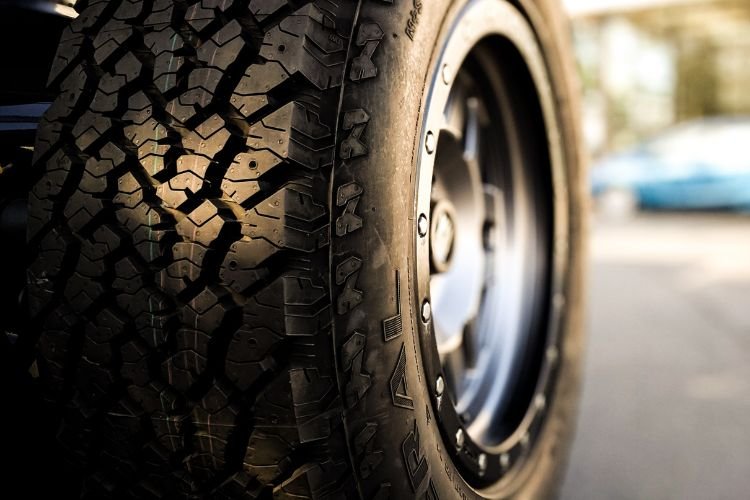
Factors Affecting Tire Pressure:
1. The size of the ATV and its load
2. Type of tire
3. Riding terrain
4. Rider Preferences
On the sidewall of your tire, there should be printed the certain tire pressure that is advised for your tire. The optimum suggested pressure is provided by the manufacturer. Do not exceed the maximum suggested tire pressure. If you do, you might trigger damage to the tire and take the chance of a tire erupting, which can cause injury.
When Should You Adjust Tire Pressure?
While it is never recommended to add or deduct too much air from the advised minimum stress, there are times when a greater tire pressure can be much more useful.
Indeed, lots of quad racers will certainly add several PSI to their ATV tires prior to a race. The added pressure will certainly make your tires a little much more tight, which is useful when taking sharp turns at high speed and also when you are sliding.
Higher tire pressure can additionally help avoid a punctured tire when you are moving at high speed. When you struck a sharper thing, a fuller tire will certainly more easily disperse off the tire whereas a tire with lower pressure will certainly let that item sink deeper into the tire, more likely creating a leak
There are additional times when a somewhat reduced tire pressure can be beneficial. These situations are where you desire extra grip and need as much of your tread to grasp the ground as feasible.
A little reduced tire pressure will certainly add even more traction when you are riding through damp mud, snow or slush. You intend to be careful in the mud; nevertheless, with reduced pressure tires can collect more mud. So, if you observe your tires getting clogged with mud, you need to enhance the tire pressure to more effectively tossing that mud from the tire.
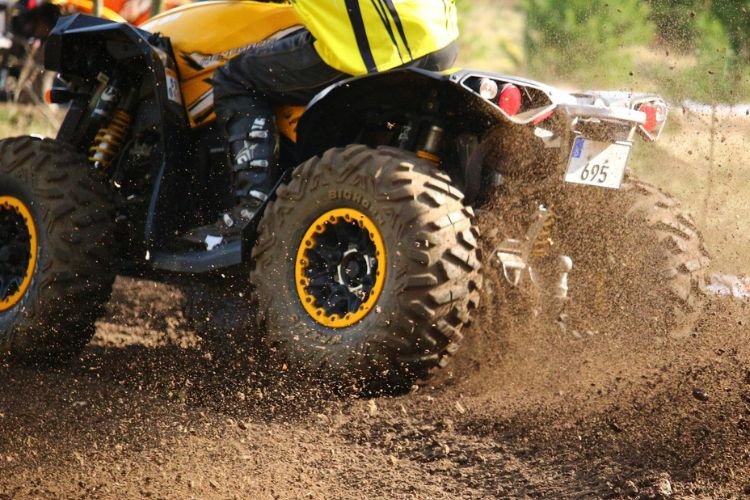
Higher Tire Pressure
Just transforming your tire pressure by 1 psi can make a large distinction in just how your ATV deals with. Higher tire pressure is much better if you intend on riding with several individuals on one ATV or if you are carrying an additional load. Such as hunting equipment or outdoor camping equipment.
You might additionally add a little air to the tire if you intend on riding on a mostly solidified surface. Often with the really sloppy surface, a boosted tire pressure can aid you to acquire traction under the mud pit and also will help you venture out a little simpler. If there is no base for the tires to grip, less tire pressure will certainly help with acquiring traction in the mud itself.
Having higher tire pressure can likewise aid protect the edges of the ATV. Pumping up the tire too much can make it easier for a sharp rock or log to puncture the tire, so be careful.
If you're riding at higher speeds, lugging additional weight, or the surface is difficultly stuffed, I recommend 7-8 psi.
Advantages of higher tire pressure:
1. Higher speed
2. Secures tire and edge from influences
3. Great for larger riders or bring added weight
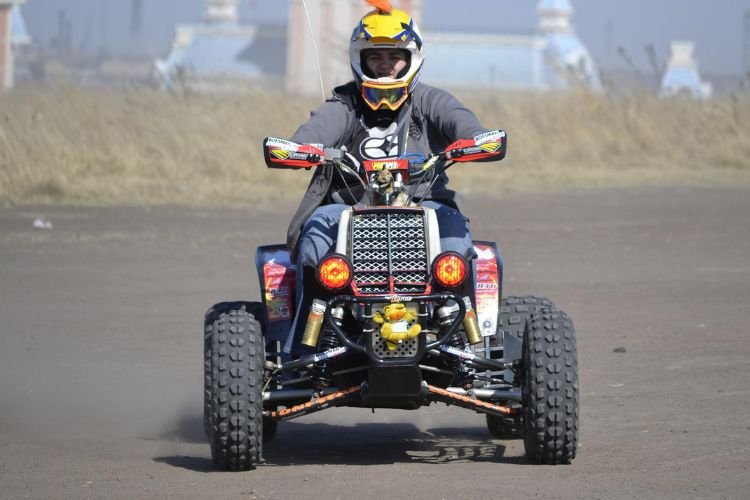
Lower Tire Pressure
Lower tire pressure is especially useful for places you require extra grip. Such as sandy locations or locations with loose dust or crushed rock.
If you're mosting likely to be riding through a great deal of sloppy surface, reduced tire pressure could be something to think about as well.
With reduced tire pressure, the tire is able to grab on the surface better, giving you much more grip in areas you require it. When riding in the snow, reduced tire pressure is also very useful. More of the tire is in contact with the ground, limiting the amount your tire will certainly slide.
If you're riding in rough, sandy, sloppy, snowy, or other loosened terrain, I suggest 3-4 psi.
Advantages of lower tire pressure:
1. Much better grip
2. Helpful for lightweight riders.
3. Great for the loose surface.
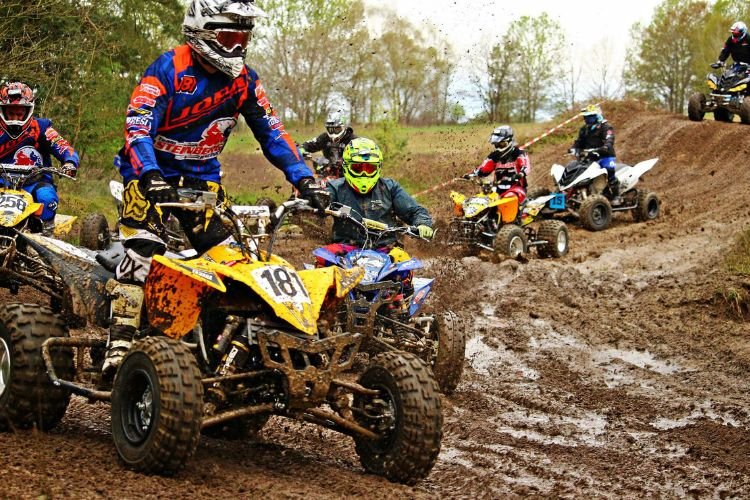
How To Check Tire Pressure
You don't want to eyeball your tire pressure when you are filling it. Particularly with off-road tires and large treads, it is really difficult to establish the tire pressure without a gauge. The only thing is you require to get a details gauge for your ATV.
You need to always examine your tire pressure when the tires are not hot. If you keep in mind high-school chemistry, it will make good sense to you that the air inside the tires will certainly expand as the tire gets hotter. This will certainly result in a greater tire pressure reading.
Due to the fact that advised tire pressures refer to the pressure at regular temperature levels, you will not obtain an exact read if your tires are too warm.
Likewise, you will get a reduced tire pressure value if you are examining the pressure at sub-freezing temperature levels. Due to this, you need to always examine your tire pressure before you ride or a few hours after you have quit riding.
Of course, if you observe your tire pressure is low throughout a ride, you naturally want to look after it as soon as possible, but just bear in mind that the tire pressure is mosting likely to read a little more than normal so you will certainly want a touch of extra air in the tires.
We suggest examining your tire pressure prior to every ride so you can always make sure the tire pressure is right. Now, the actual procedure of examining the tire pressure is rather easy.
The steps of the tires pressure check are as follows:
1. Remove the cap from the air shutoff on the tire, and also placed it someplace you won't lose it.
2. Press the tire gauge versus the open shutoff stem for a second or two. It's regular to listen to a hiss of air.
3. Read the pressure gauge. For hands-on determines, a dial points to the stress or a bar shows the stress by just how far it was pushed out. The stress will show up onscreen on an electronic tire gauge.
4. Contrast this number with the advised tire pressure.
5. Replace the tire's air valve cap. (Resist this action if you require to change the air pressure.).
6. Repeat this procedure for every tire.
Digital gauges can be easier to read. With the hand-operated ones, you might need to reconsider it if something interrupted the gauge when it was popping out since that would certainly make the outcome imprecise.
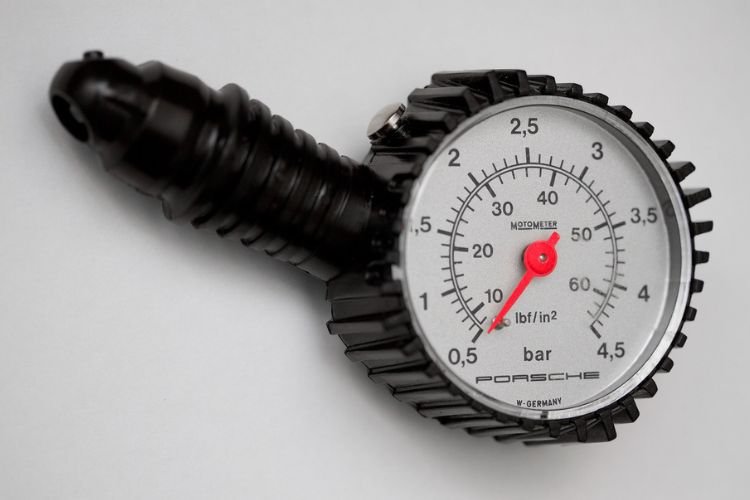
What Occurs If You Exceed Max PSI?
Too much air pressure can also misshape the shape of the tire, bring about lowered traction and boosted wear and tear down the center of the tire. Depending on the scenarios, repetitively overinflated tires could wear quicker.
Which Tires Are Best?
The optimal tires for your ATV rely on what you're planning to do with it. For example, all-terrain or all-purpose tires are similar to all-season ones on your automobile. They're great for driving on sand, grass, mud or sidewalk, yet they don't really shine on any type of surface.
Mud tires are constructed to control the muck. They feature much deeper aggressive steps to dig through mud and obtain a grip. While they succeed on sloppy trails and also crushed rock, and also succeed on hard snowpack and tough sand, they might not give you much grip on soft sand or sidewalk.
Off-road tires are really a balance in between all-purpose and mud tires. They feature more-aggressive tread than versatile tires, yet are not as hostile as mud tires. Off-road tire construction, as well as sturdiness strikes a comparable equilibrium.
Turf-saver tires provide the very best traction on sidewalks as well as other tough surfaces. Their level non-aggressive tread keeps them from messing up the lawn and helps them last longer on difficult surface areas. Sand tires, on the other hand, are made for soft sand. Back sand tires are wide for far better flotation protection, and also level ribs cross the entire width of the tire for grip, and also it's easy to see why they're commonly called "paddle tires." Front sand tires normally include no step at all, with a solitary or double rib for guiding.
Snow tires can be located in layouts comparable to both mud tires as well as sand tires, one more balance of grip and also flotation protection. Some also feature openings for studding.
Motocross tires are similar to all-purpose tires, yet optimized for shut dust tracks, whose surface areas are usually pretty uniform and loosened. Tight lugs and broad spacing create far better cornering, traction and also cleanout.
How Fast 125cc ATV Go? Most Complete Overview 2022

Rodney L is a technical writer and product consultant with over a decade of experience in the motor industry. Rodney is a fan of performance machines that run fast and loud and an expert in all things custom. His numerous articles and write-ups are available at our knowledge base. Whether it’s something wrong with your motorcycle or you are building a custom bike, you can trust Rodney’s experience.
Picking the perfect brake pads for your ride has an influence on how safe you are, how well your whip handles, and what you’ll shell out over time. You’ve got a whole menu, from wallet-easy organic pads to fancy ceramic or semi-metallic types. To get why budget brake pads ain't the same as the pricier […]
E-bikes have transformed into more than just gadgets to help you get around. Now, they're speed demons that can go toe-to-toe with motorbikes. It’s 2025, and these speedy machines have gotten a huge boost from better motors, more powerful batteries, and sleek designs that cut through the air like a knife. Let’s dive into the […]
Many riders who aren't so tall or ladies just starting to ride bikes need to pick out the best Motorcycles for Short Riders and Women. They gotta look for three key things: a seat that's not too high up, a bike that's not too heavy, and something that looks good enough to give them confidence. […]
As we accelerate into 2025, motorbikes are getting a serious tech upgrade. They’re all about safer rides and more fun on the road. Even if you’re a pro or just starting, kitting out your two-wheeler with cool tech stuff is a game-changer. Check out these ten top motorcycle gadgets each motorcyclist will want in 2025. […]
Getting around the city every day can be super annoying. You've got traffic like molasses nowhere to park, fuel prices through the roof, and buses stuffed like sardine cans make heading to the office a real pain. For loads of folks, getting a motorcycle is a pretty slick move—they’re nimble, cost-effective, and perfect for squeezing […]

